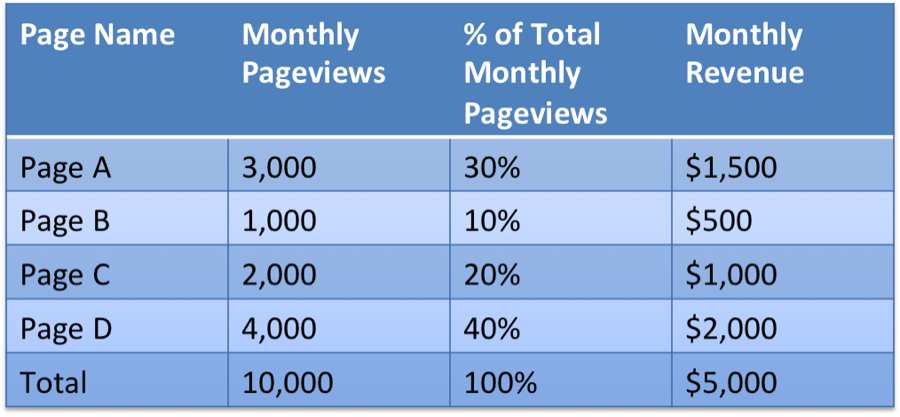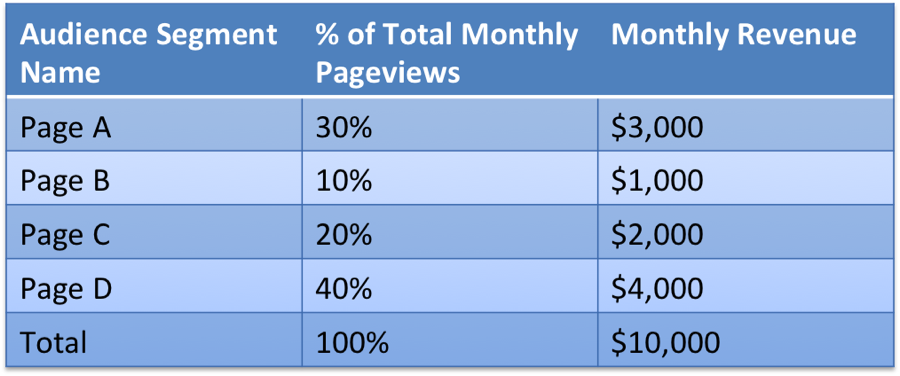Originally Published on ClickZ.
These four metrics go beyond CPM and Fill Rate to help publishers measure the success of their digital advertising efforts.
As with any other business, there are two approaches publishers can take to grow their revenue: grow their current business and acquire new business. Or in this case, better engage current readers and attract new readers. Many times publishers find that by focusing on retaining their current readers they also begin attracting new readers in tandem. So today, we will focus on 4 key performance metrics that publishers can use to understand and better monetize their current readers.
Most publishers rely on CPM and Fill Rate metrics to judge the success of their digital advertising efforts. While CPM and Fill Rate are great ad performance metrics, they are not good site performance or engagement metrics. Because site performance majorly influences ad performance, it is important to measure performance against both sets of KPIs. Furthermore, adding the four following equations into your monthly performance review will bring you a step closer to understanding the true value of your readers and opportunities for growth.
1. Revenue per Visitor:
The purpose of running this equation is to gain a better understanding of the average value advertisers are placing on your readers. The eventual goal is to not only increase traffic, but to increase revenue per visitor as well. This indicates that you are increasing your value to the buy-side marketers.
- Total Monthly Ad Revenue / # of Monthly Unique Visitors = Revenue per Visitor
Once you determine the average value of a reader on your site for several months, you can create a baseline value and set goals for the future.
From here, you can also begin to gauge the right spend threshold for getting a positive return on paid marketing channels.
2. Revenue per Page:
By calculating how much revenue is generated from a particular page on your site, you gain a more in-depth understanding of how much each piece of content is worth. The goal is to discover which piece of content drives the most revenue.
Let’s say in the month of December you earned a total of $5,000 from digital ads.

Track this monthly so you can start to identify reoccurring trends. For example, Let’s say Page D consistently attracts the majority of your total monthly pageviews. Why is that? Is there a specific topic you’ve been covering on that page? Is there a certain type of content you’ve been hosting (webinar, PDFs, e-Books, etc.) on that page? Once you identify the culprit, you can clone that methodology to please your readers and increase your earnings sitewide.
Furthermore, once you determine the highest performing page, be sure to take a look at how many ad zones you have on that page. For example, if Page D sees 40% of your monthly pageviews and you only have (1) ad zone on that page, you might want to consider adding more zones to multiply the number of ad requests, and thus revenue, for that page.
3. Pages per Visitor:
Your average pages per visitor is a metric that you can easily pull straight from Google Analytics and other site analytics tools. This metric provides a high-level understanding of reader engagement on your site. If you can determine how many pages each visitor views, you should be able to figure out a strategy for increasing that number by identifying reoccurring trends month over month.
Another lens to view this metric through is by calculating the average number of ad requests per visitor.
Keep in mind; pageviews is a different metric than visitors. One visitor can have multiple pageviews.
4. Revenue per Audience Segment:
Running this calculation requires insight into your audience demographics, but many ad partners and analytics tools provide publishers with that info. The goal is to determine which one of your audience segments is generating the most revenue. You may find that the segment providing you with the most traffic is not providing you with the highest revenue. This calculation is similar to revenue per page from above:

Once you determine which audience segment is bringing in the most revenue, you can make informed strategic decisions that capitalize on a particular audience.
By looking a step deeper into your site performance metrics, in addition to ad performance metrics like CPM and Fill Rate, you develop a well-rounded understanding of both cause and effect when it comes to your ad revenue.
Act on these performance indicators by fully optimizing your site to capitalize on each page, ad zone, audience segment and unique visitor. By taking this approach, you increase the value of your readers and attract new readers as well.

